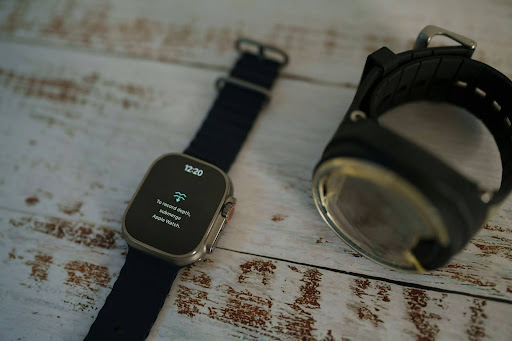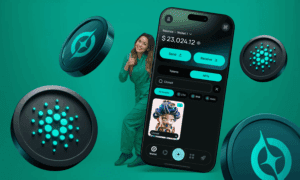Smartwatches have quickly grown from niche tech accessories into everyday wellness tools. One of their more impressive abilities is SpO2 monitoring—tracking the oxygen saturation in your blood. A smartwatch with SpO2 sensor doesn’t just give you fitness metrics—it opens a window into your respiratory and overall health.
What used to require bulky hospital-grade equipment is now accessible from your wrist. With advances in wearable tech, keeping tabs on your blood oxygen levels throughout the day and night has never been easier.
Why SpO2 Matters in Modern Life
SpO2—short for peripheral capillary oxygen saturation—tells us how well oxygen is being distributed throughout the body. It’s particularly helpful for people with respiratory issues, athletes training at high altitudes, and anyone curious about their sleep quality.
Monitoring SpO2 levels can provide insights into:
- Breathing irregularities during sleep
- Early signs of respiratory illness
- How your body responds to stress or activity
- Recovery trends after intense workouts
Even in healthy individuals, SpO2 trends reveal patterns that can help improve lifestyle choices.
How a Smartwatch Measures SpO2
Modern smartwatches use a non-invasive method to estimate oxygen saturation in your blood using sensors and reflected light.
1. The Basics of Light Sensors
SpO2 watches shine red and infrared light through the skin and measure how much light is absorbed. Oxygen-rich and oxygen-poor blood absorb light differently, allowing the watch to calculate oxygen levels.
2. Passive or Active Monitoring
Some devices take spot checks, while others monitor automatically throughout the day and night. Overnight SpO2 tracking is particularly useful for detecting breathing disruptions like sleep apnea.
3. Paired With Other Metrics
For a broader view of your health, many smartwatches combine SpO2 data with:
- Heart rate
- Sleep stages
- Movement
- Stress indicators
Together, these give a fuller picture of your overall wellness.
Signs You Might Benefit From an SpO2 Smartwatch
While not a replacement for medical tools, a smartwatch with an SpO2 sensor is helpful in many situations:
Sleep Tracking for Better Rest
If you wake up groggy or tired despite a full night’s sleep, low oxygen during the night could be a factor. SpO2 readings help identify drops that may relate to sleep disorders.
Monitoring High-Altitude Acclimatization
If you travel, hike, or live at high altitudes, an SpO2 tracker lets you watch how your body adapts to thinner air.
Everyday Wellness Checks
With stress, fatigue, or illness, oxygen levels may subtly fluctuate. Monitoring trends helps you spot issues early.
Supporting Recovery From Illness
After respiratory infections or other health challenges, tracking SpO2 helps ensure you’re healing well and not experiencing setbacks.
Choosing a Smartwatch With the Right Features
Not all smartwatches are created equal. When looking for one with an SpO2 sensor, consider the following:
1. Accurate and Consistent Readings
Look for devices that regularly update software and calibrate well against reference data. While not medical-grade, consistent readings matter.
2. Comfort and Build Quality
You’ll want to wear it all day—and night. That means:
- Soft, hypoallergenic bands
- Lightweight construction
- Durable casing
3. Extended Battery Life
Oxygen tracking drains battery faster. Pick a watch with long battery life—ideally one that lasts several days per charge.
4. Easy-to-Use App Integration
Smartwatches should offer clear visuals through companion apps:
- Charts for trends and changes
- Alerts for abnormal readings
- Sync with fitness or health platforms
If you’re exploring a smartwatch with SpO2 sensor that fits these features, KOSPET’s wearable lineup is a good place to start.
Broader Wellness Benefits
Wearing a smartwatch isn’t just about data collection—it’s about using that data to make smarter choices.
Hydration and Breathing Patterns
You may start noticing when your SpO2 dips after a long meeting or stressful moment. That’s your cue to breathe deeply or hydrate.
Movement and Break Reminders
Low oxygen levels may be your body’s way of saying it’s time to stretch or move. Many smartwatches nudge you to stay active.
Mindful Sleep Habits
Pairing sleep cycle insights with oxygen levels shows how well your body is restoring overnight. It may guide you to adjust bedtime routines or sleep environments.
Supporting Emotional Health
SpO2, heart rate, and stress tracking often correlate. A drop in oxygen might pair with anxiety—leading you to integrate calming practices like deep breathing or meditation.
Pairing With Blood Pressure Features
Some smartwatches also include tools that monitor blood pressure. This combination enhances wellness insights by giving a broader cardiovascular perspective.
For example, if you notice:
- Low SpO2 + High BP: It might indicate poor sleep or elevated stress.
- Normal SpO2 + Spiking BP: Could suggest physical or emotional stressors not related to respiratory health.
This dynamic duo is particularly helpful for anyone trying to understand the interplay between breathing, circulation, and overall health.
A model offering both is ideal for people who want round-the-clock monitoring that doesn’t feel clinical. KOSPET offers options that suit this profile. Their smartwatch that can measure blood pressure alongside SpO2 tracking builds a richer, more complete health story.
How to Get the Most From Your Watch
1. Be Consistent
Track at similar times daily for baseline comparisons. Morning and evening are ideal.
2. Track During Sleep
Many insights are missed if you only wear it during the day. Nighttime SpO2 trends are especially important.
3. Pay Attention to Patterns, Not Just Peaks
An occasional dip isn’t always cause for concern. Look for repeated trends over days or weeks.
4. Pair With Lifestyle Habits
If you notice dips, reflect on what might have caused them. A late meal? A stressful meeting? Tracking encourages awareness.
5. Stay Informed
Use the watch as a tool, not a diagnosis. Talk to a healthcare professional if readings feel off or inconsistent.
Final Thoughts
A smartwatch with an SpO2 sensor is more than just a gadget—it’s a gateway to deeper awareness. When paired with blood pressure tracking and other wellness features, it gives everyday users access to the kind of data that used to live in clinics.
And with brands like KOSPET leading the way, these tools don’t feel intrusive or overly techy. They blend into your life while quietly offering insights that can shape healthier choices.
In a world that often pushes us to move faster and pay less attention, tools like these offer a chance to slow down, breathe deeper, and listen to what our bodies are saying.





























